For many experienced stakeholders, intuition can provide a spark that starts the need to make a decision. Nevertheless, it’s only through trustworthy, valid, and real-time granular data that a stakeholder can verify, understand, and quantify the possible outcomes of the decision to be made. Data granularity is the level of detail considered in the decision-making process or represented in an analysis report. The greater the granularity, the deeper the level of data detail. Increased granularity can help stakeholders to drill down on the details of each project record to better understand the events that occurred, actions taken, and who was involved in the taken actions.
Having too much wrong and invalid data is just as bad as not having access to the needed data. For organizations that have digitized the business processes needed to manage the delivery of capital construction projects, the stakeholders will always have the insights to track and analyze data to provide actionable insights. Increased data granularity helps those stakeholders to make better and faster-informed decisions.
Granular data provides indisputable evidence, while assumptions might lead to wrong decisions due to taking actions based on incorrect conclusions. Having granular data allows stakeholders to more effectively determine the cause of problems and present them with a strong argument for decisions to be made. In addition, granular data allows stakeholders to establish baselines and benchmarks to measure the performance of their key project objectives.
Using a business intelligence tool like MS Power BI where it has a function known as Power Q&A which is a natural question and answering engine, stakeholders can ask questions on the existing model with natural language and get a response with visualization elements. Of course, for this feature to be of value, stakeholders need to have access to the different reports that are based on the granular data captured for the different business processes on their managed projects. Those reports will be designed and published as dashboards only once, as they will be automatically refreshed with updated data as the project progresses. The refresh of those dashboards can be set as real-time or configured to be done at certain time periods of the day. Reports that are mainly designed to provide the answers to questions asked do not need to include many graphical visuals as the main purpose of those reports is to provide the information for the answers to the raised questions. Of course, there is always the option to add graphical visuals to the questions’ answers when needed.
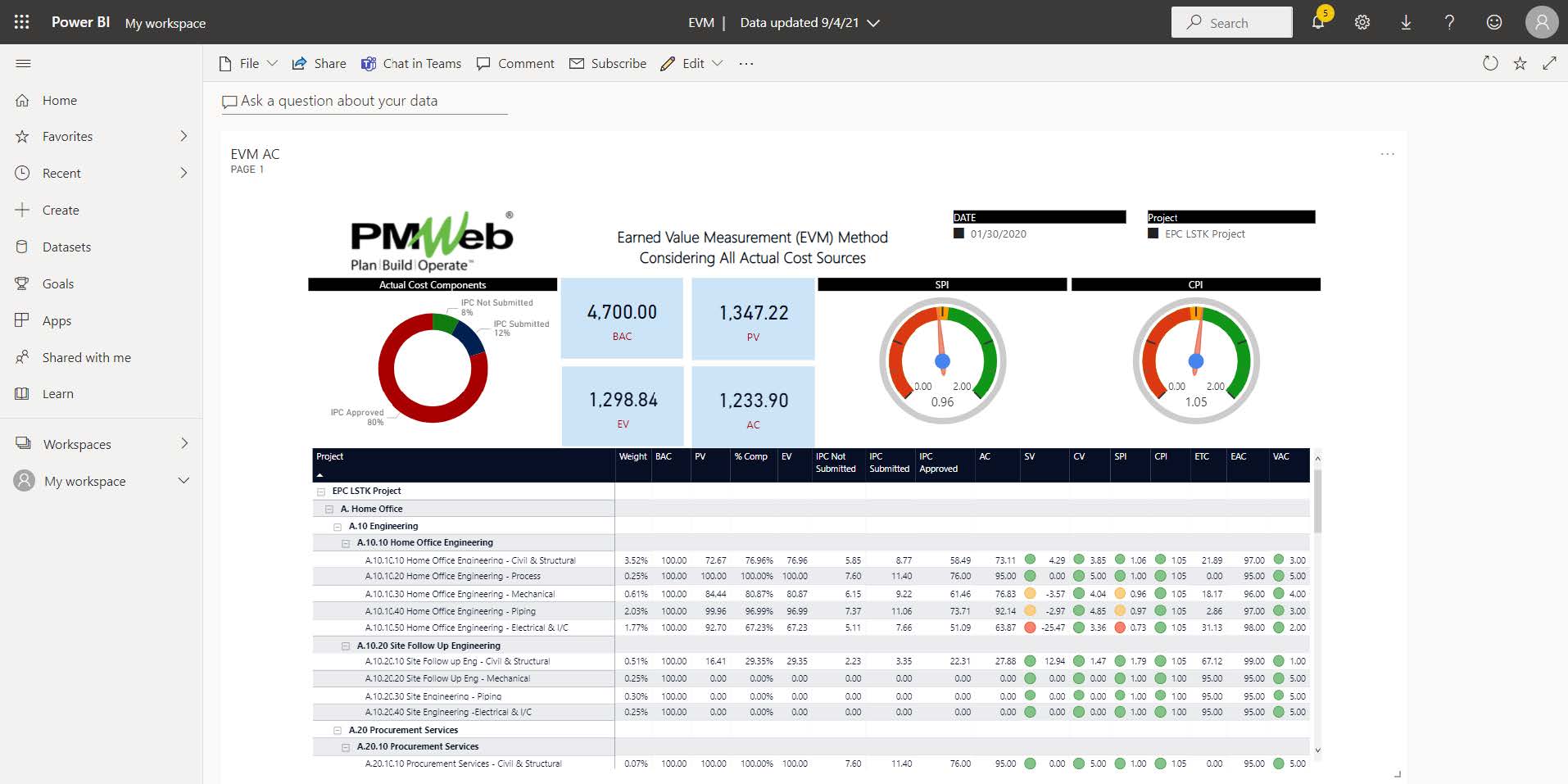
For example, when the question is “Work Packages with SPI less than 1 and CPI greater than 1” where SPI is for Schedule Performance Index and CPI for Cost Performance Index is asked, MS Power BI automatically filters the published report and identifies the records that meet the criteria.

The source of the data used to model the MS Power BI reports is extracted from a Project Management Information System (PMIS) like PMWeb, which is used to digitize the business processes required to manage the delivery of a capital construction project. The tens of thousands of records and documents generated from managing those business processes stay stored in PMWeb single database repository. This is where MS Power BI would be configured to extract, load, and transfer this data so it can be modeled and reported on. The PMWeb pre-configured star-schema datasets ensures that hundreds of datasets are automatically associated with each other using the common key fields of each data set.
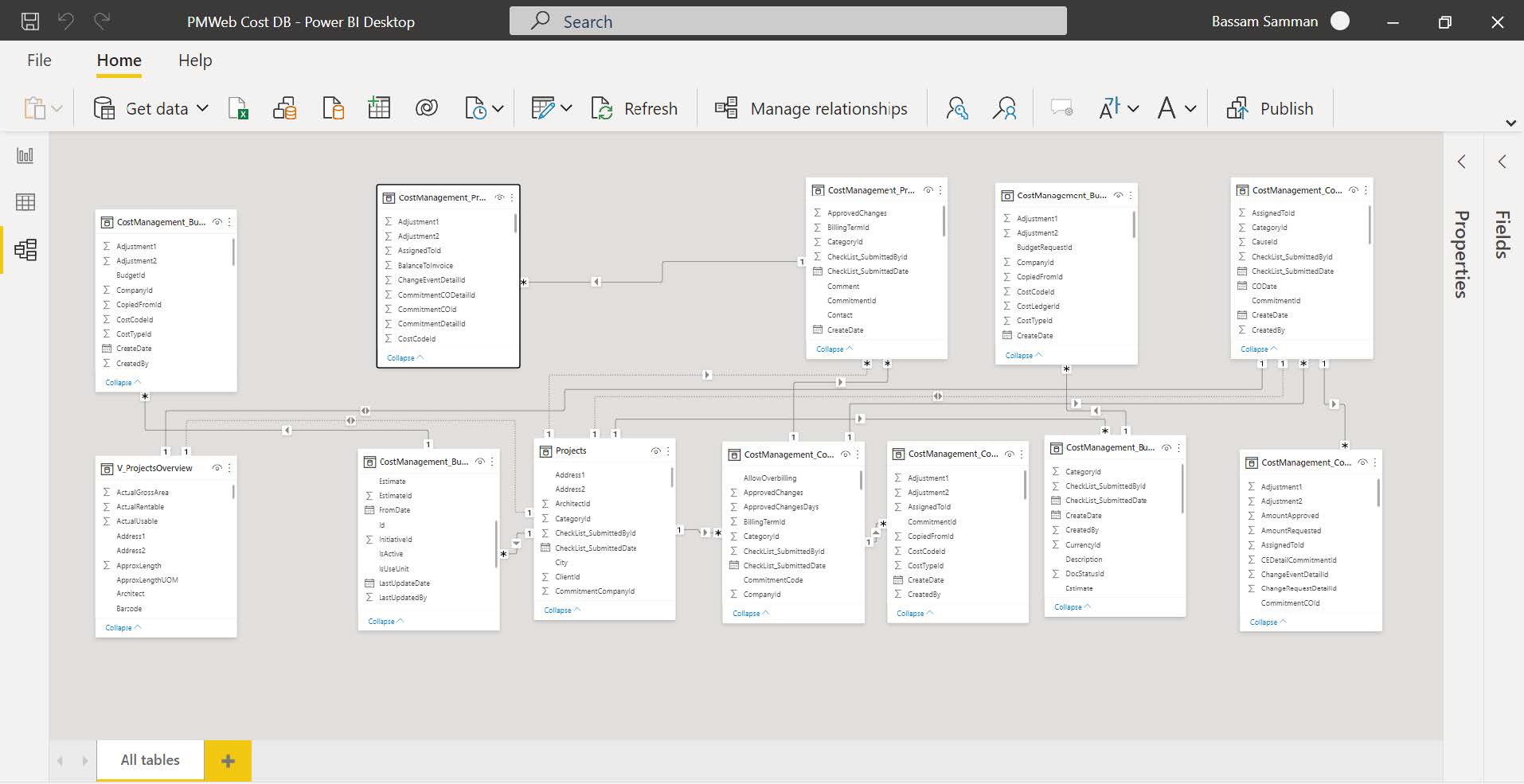
To enable having trustworthy, credible, and traceable data at the required granular level, templates need to be made available for each business process to digitize using PMWeb. Those templates ensure the quality and validity of the data that is captured from the project team members who would have a role in performing those business processes as defined in the project’s Responsibility Assignment Matrix (RAM).PMWeb comes ready with input templates for most of the commonly used business processes on capital construction projects. Those templates include the templates required to manage all project cost and contracts business processes, risks as well as many of the communications business processes like those for Request for Information (RFI), Meeting Minutes, Safety Accidents, Punch Lists, Daily Reports, Submittals, Transmittals, Correspondence, and others. Those templates include all needed data fields for each business process as well as any additional fields that might be required. Those templates are configurable to restrict access to only those authorized individuals as well as restrict access to the data fields within each template as needed.
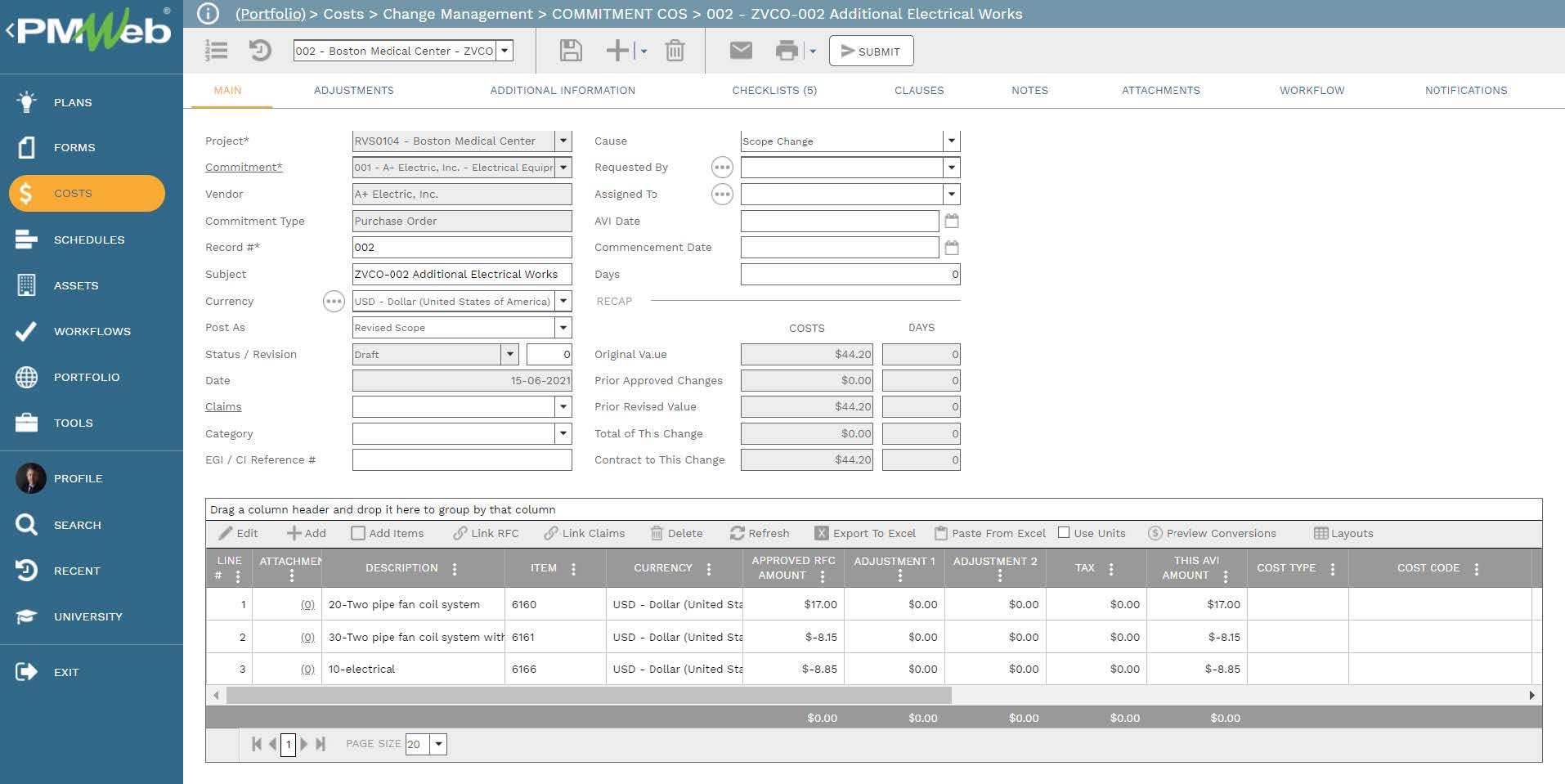
In addition, PMWeb custom form builder is used to create the input templates for all other business processes that are not readily available in PMWeb. Similar to the ready-to-use templates, access rights can be configured to restrict individuals who can access each business process template and the data fields they can access within each template. Examples of templates created using PMWeb custom form builder include Non-Conformance Reports (NCR), Work Inspection Requests (WIR), Confirmation of Verbal Instructions (CVI), Engineer’s Instruction (EI), Site Work Instruction (SWI), Monthly Progress Reports, Checklists for Healthy, Safety, and Environment (EHS) Assessment and Compliance among others.
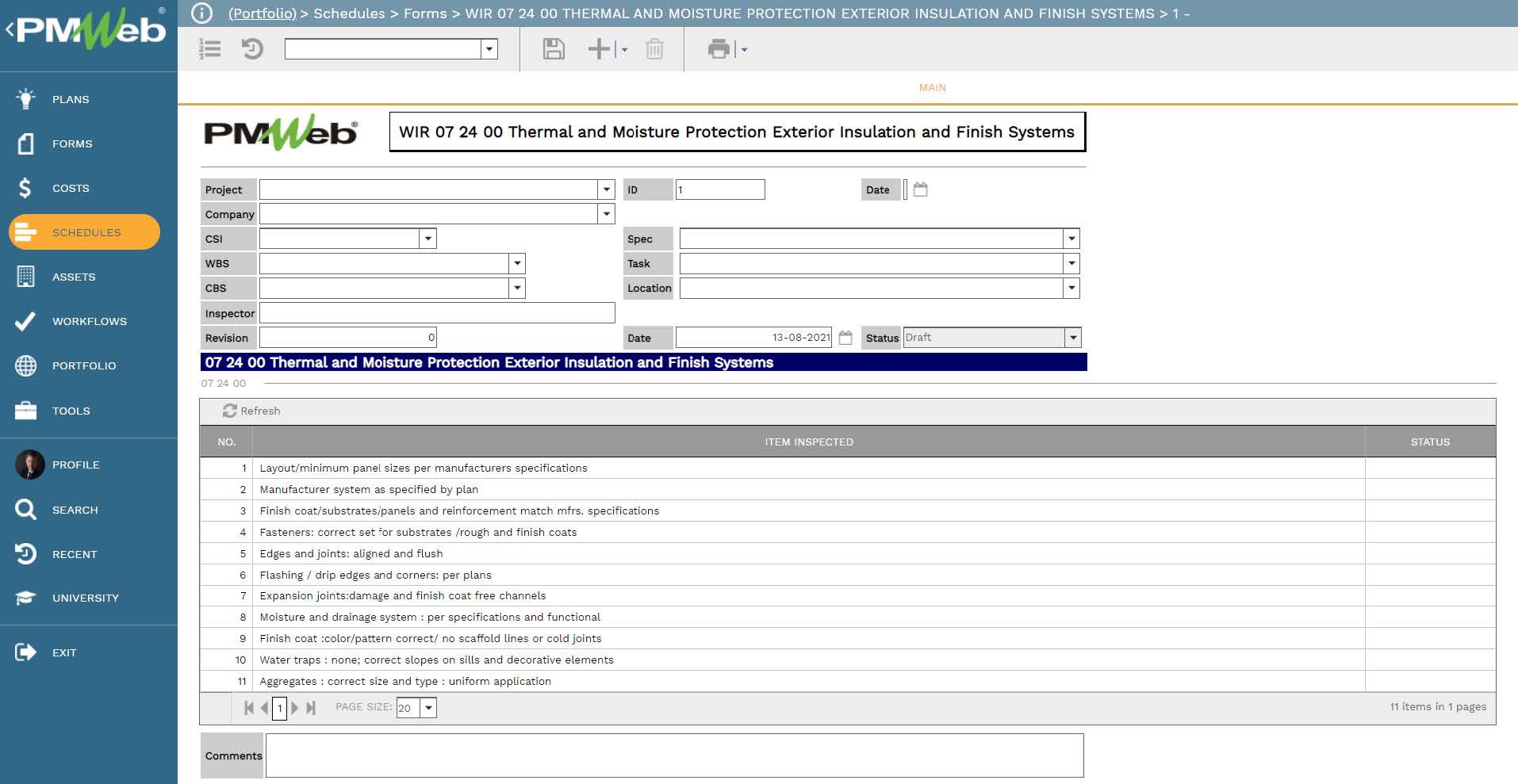
Similar to all other business processes managed in PMWeb, supportive documents that are usually associated or required for each record transaction for each business process can be attached to the template. It is highly recommended to add details to each attached document to better explain to the reader what is being attached and viewed. In addition, links to other relevant records of other business processes managed in PMWeb can also be linked to the reported progress.
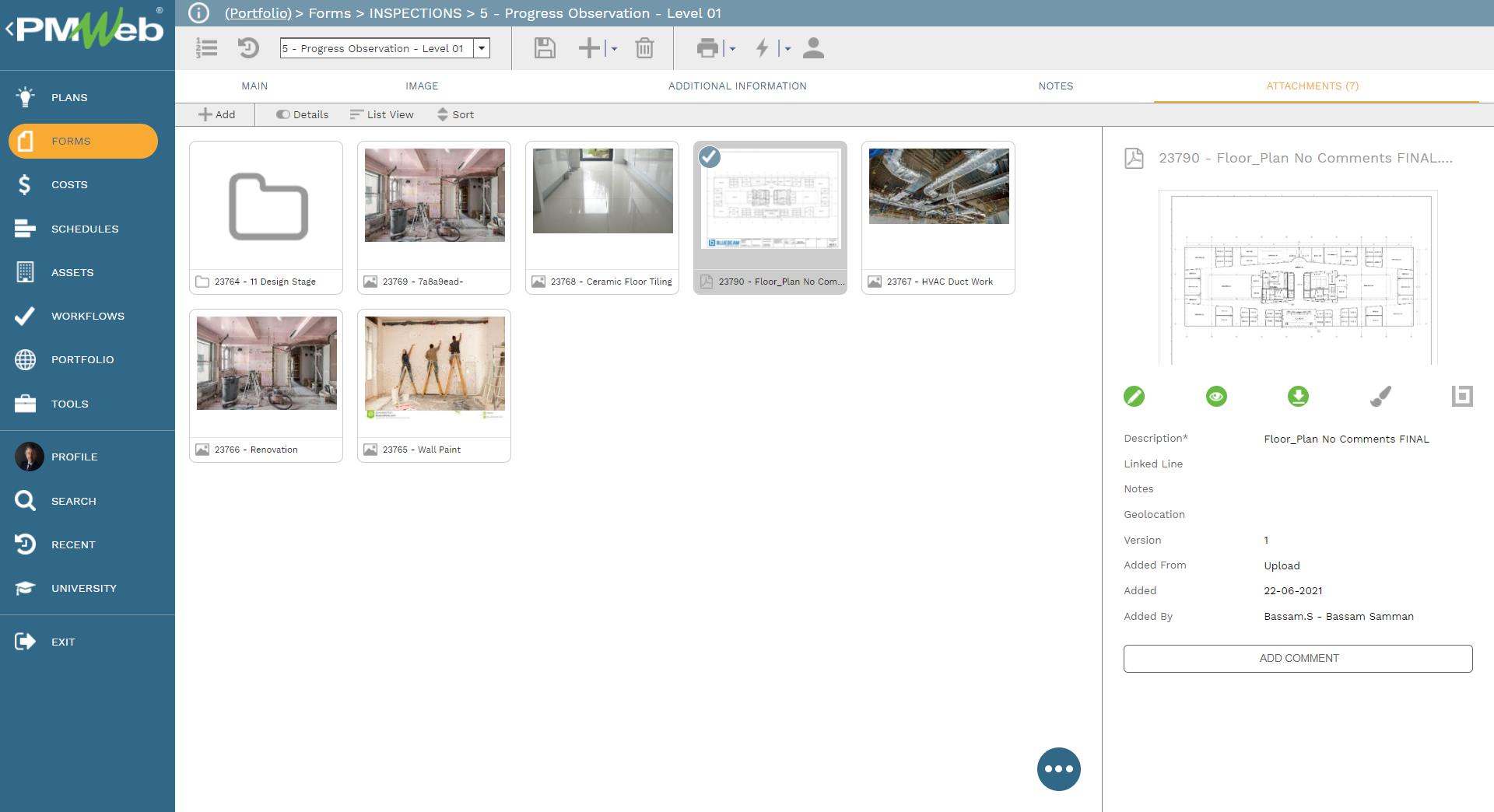
It is highly recommended that all those supportive documents, regardless of their type or source, get uploaded and stored on the PMWeb document management repository. PMWeb allows creating folders and subfolders to match the physical filing structure used to store hard copies of those documents.

To ensure that the submit, review, and approve dates of each transaction of each business process are captured, assign a workflow to each business process. The assigned workflow maps the submit, review and approve tasks, roles or roles assigned to each task, task duration, task type, and actions available for the task.
In addition, the workflow could be designed to include conditions to enforce the approval authority levels as defined in the Delegation of Authority (DoA) matrix. This is required as all of the needed business processes have financial implications for which the decision to approve depends on the roles and responsibilities of the individuals involved in those business processes.
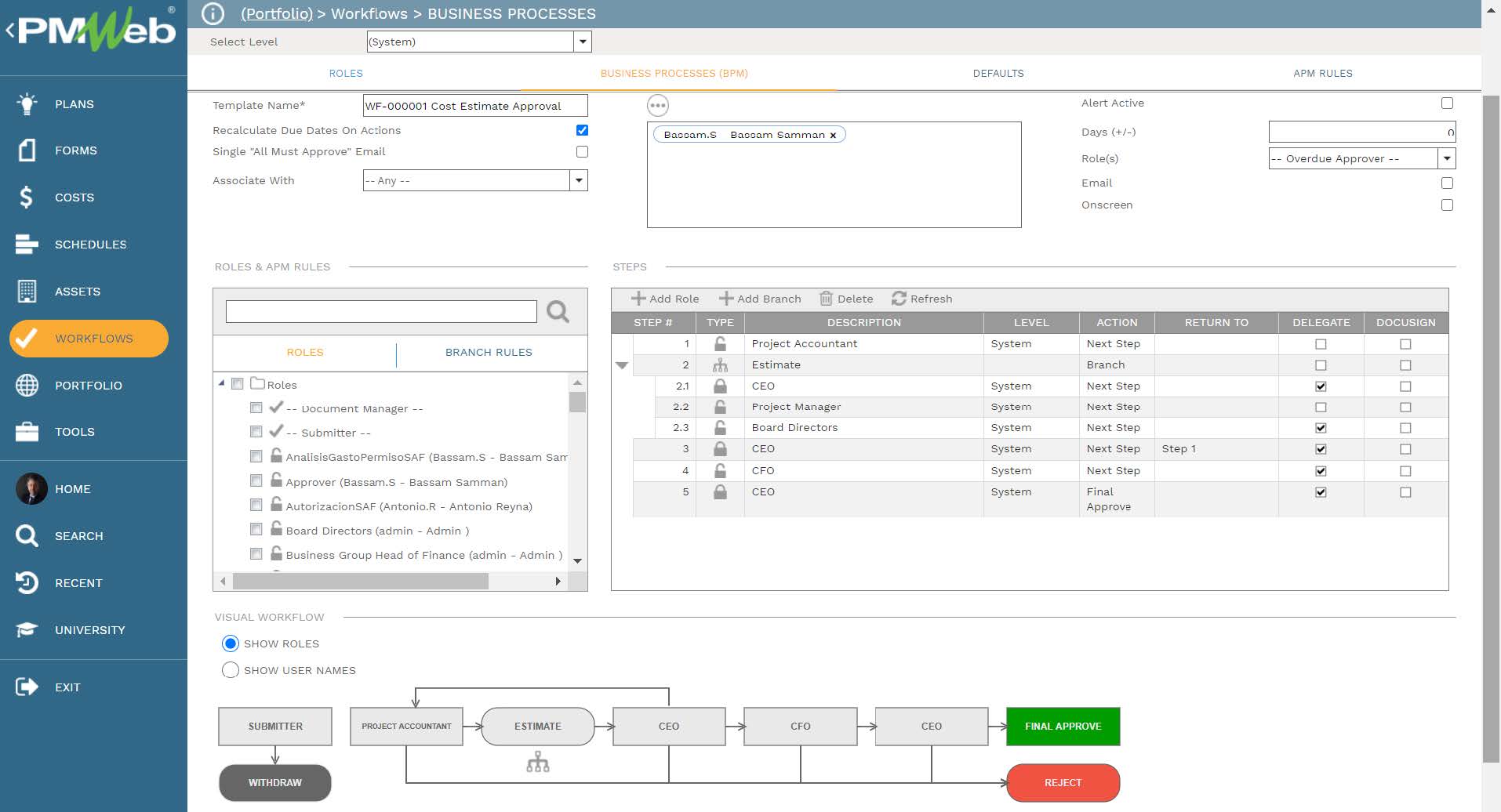
When a transaction of any business process is initiated, the workflow tab available on the business process template captures the planned review and approve workflow tasks for each transaction as well as the actual history of those review and approval tasks. The captured workflow data includes the actual action data and time, done by who, action taken, comments made, and whether team input was requested.
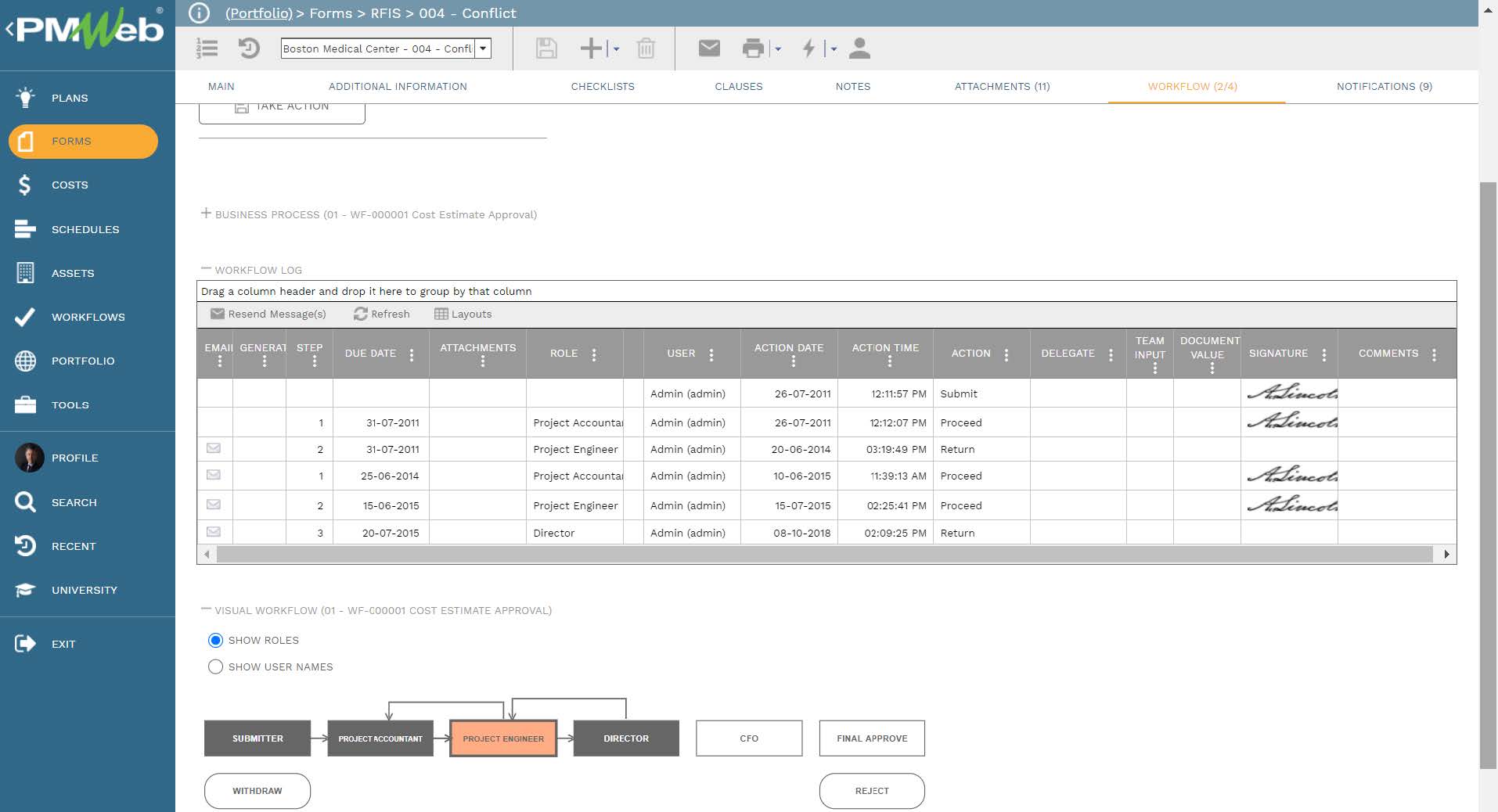
This trustworthy, valid, credible, and real-time data becomes the only source for all information modeled in MS Power BI reports and dashboards. This enables stakeholders to raise all questions that they need to get answers for. Those answers become the basis for confirming those stakeholders’ intuitions. This data is used by each stakeholder to verify, understand, and quantify the possible outcomes of the decision that he/she will make.



